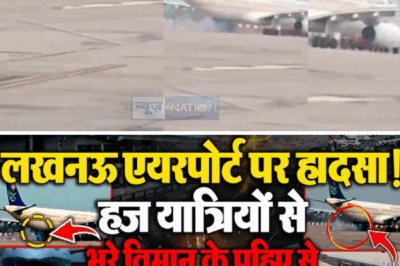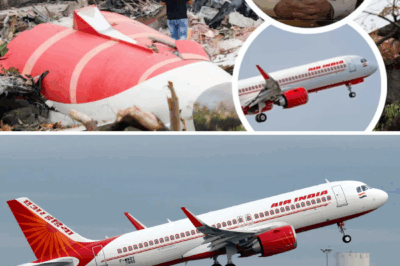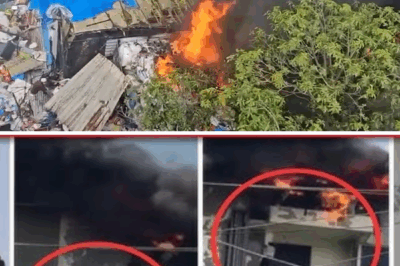The recent crash of India 171 has sparked widespread debate and speculation, both online and among aviation experts. While official investigations are still underway, a number of theories have emerged on social media, with some international pilots suggesting that the Indian pilots may have mistakenly retracted the flaps instead of the landing gear, leading to a catastrophic loss of lift.

The Flap vs. Gear Debate
According to these theories, cockpit footage and crash evidence indicate that the landing gear was still down when the plane crashed, which is unusual as pilots typically retract the gear at around 100 feet after takeoff. The suggestion is that the pilots may have retracted the flaps prematurely, causing a sudden loss of lift and ultimately the crash. However, this theory has been met with skepticism by several Indian pilots and aviation analysts.
One experienced pilot, speaking in a video that has since gone viral, questioned the validity of blaming the pilots so quickly. He argues that it is often easier for airlines and aircraft manufacturers to attribute crashes to pilot error, as this makes insurance claims more straightforward and shields large companies from liability.
Technical Analysis and Doubts
The pilot goes on to debunk the flap-retraction theory on several grounds:
1. Cockpit Layout:
The flap and landing gear levers are not located next to each other in the cockpit, making it highly unlikely that a pilot would confuse the two, especially on a Boeing 787. The flap handle is positioned differently and requires a deliberate reach.
2. Time Factor:
Retracting flaps is not instantaneous; it takes about 18 seconds for the flaps to move from position 1 (or 5 degrees) to zero. During this time, the captain or another crew member would likely notice and correct the mistake before it became critical.
3. Aircraft Protections:
Modern aircraft like the Boeing 787 and Airbus models have built-in protections to prevent loss of lift due to flap mismanagement. For example, the “Slat Auto-Gap” function automatically extends the slats if the angle of attack is high and speed is below 225 knots, even if the flap lever is set to zero. This system is designed to prevent exactly the kind of accident being theorized.
4. Crash Evidence:
Photographs from the crash site show that some slats and flaps were still deployed, further casting doubt on the theory that a complete retraction caused the loss of lift.
5. Aircraft Performance
Even if the flaps were fully retracted and both engines were functioning properly, the aircraft would still be able to climb, albeit at a reduced rate. The loss of lift would not be so sudden or severe as to cause an immediate crash.
A Call for Caution and Patience
The pilot concludes that while it is tempting to speculate, only the official investigation can determine the true cause of the crash. He emphasizes that blaming the pilots without concrete evidence is not only unfair but also overlooks the sophisticated safety systems built into modern aircraft. He promises to release a more detailed analysis soon but urges viewers to be patient and await the findings of the investigative agencies.
For now, the cause of the India 171 crash remains uncertain. What is clear, however, is that the debate highlights the complexities of modern aviation and the need for thorough, unbiased investigations before drawing conclusions.
News
Saudia Airlines Plane Lands Safely at Lucknow Airport After Technical Issue
A Saudia Airlines plane carrying 242 Haj pilgrims and crew members experienced a technical issue during landing at Lucknow’s Chaudhary…
Air India Flight Returns to Hong Kong Due to Technical Issues
A recent incident involving an Air India flight has raised concerns about the airline’s safety standards. The flight, which was…
Bihar: Wife caught red-handed with lover… now case against husband, leaving the child and asking for divorce!
Husband Accuses Wife of Infidelity, Seeks Police Intervention A heart-wrenching drama has unfolded in Bihar’s Hajipur, where a husband has…
Tragedy Strikes as Indian Doctor’s Family Perishes in Plane Crash
Tragedy Strikes as Indian Doctor’s Family Perishes in Plane Crash A devastating plane crash in Ahmedabad has claimed the lives…
Massive Fire Erupts at Furniture Shop, Flammable Materials Fuel Rapid Spread
A devastating fire broke out at a furniture shop, with strong winds threatening to worsen the situation at any moment….
Nadiya Ke Paar Actor Inder Thakur Died In Plane Crashes With His Family
The classic film Nadiya Ke Paar holds a special place in the hearts of millions, evoking nostalgia for village life…
End of content
No more pages to load












